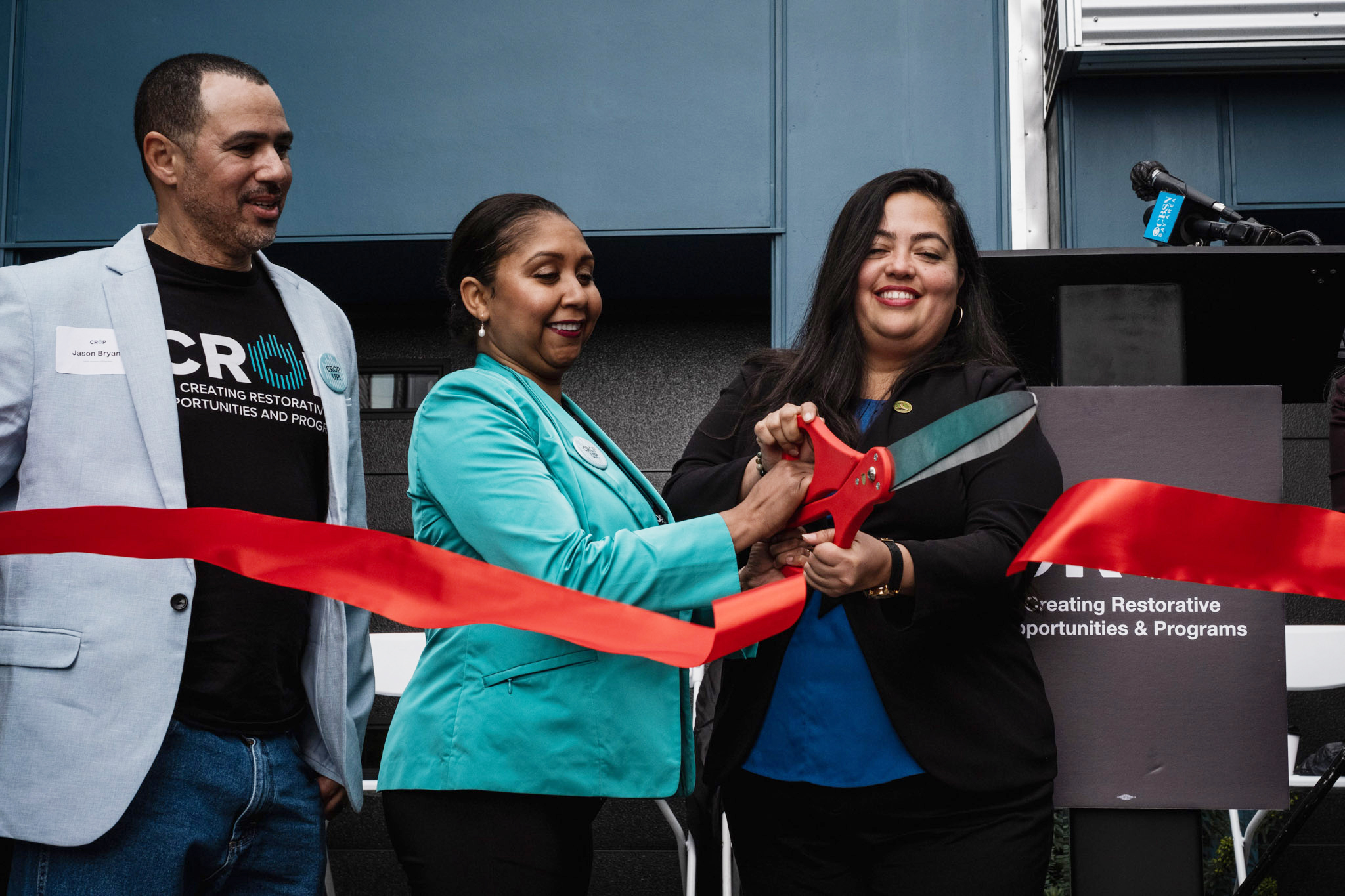Lamar Simms had a gleaming smile behind sunglasses as he held one hand out for a shake; his other was busy holding a cell phone broadcasting on Facebook Live.
It was only three-and-a-half weeks prior that Simms had been released from a nearly 30-year prison term.
“I’m just trying to share my experience and my journey,” Simms said. “I feel absolutely blessed to get out at this particular time because there is an abundance and a wealth of resources and opportunity for us returning home.”
Simms is part of the inaugural class of the Ready for Life program from Creating Restorative Opportunities and Programs (CROP), a nonprofit organization dedicated to helping formerly incarcerated individuals successfully reintegrate into society.
“I’m the first to raise my hand and say that I bear responsibility for a lot of the situations that I encountered, but it’s been my experience that nine times out of 10, if given an opportunity to change their life, people will take that,” Simms said.
Ready for Life is a new end-to-end reentry program, which launches in March and includes emotional and leadership coaching, training around financial wellness and literacy, workforce training for the technology industry and—for participants that need it—housing at CROP’s new facility in West Oakland.
As part of the 12-month program, the 30 cohort members in the Bay Area receive a laptop, a cash-secured credit card and $1,000 monthly stipend split between a savings and checking account.
The goal is to create a model to lower the 53% recidivism rate for the more than 9,000 people who are released from prison every year in California. A three-year pilot for Ready for Life is funded by $28.5 million in state grants shepherded by Assemblymember Wendy Carrillo, who represents East Los Angeles.
“California must be a place that offers a second chance to those who have taken every step in themselves,” Carrillo said at the ribbon-cutting ceremony for the new facility, which includes 35 private residential rooms, classroom and conference space, shared kitchens and amenities like a gym, a library and a podcast studio.
“By focusing on rehabilitation and investing in individuals to restart their lives, we invest in the future of our economy, our communities and our families.”
Workforce training will be provided in partnership with the SAP Academy for Engineering to prepare participants for careers in user-experience design and tech sales. After certification, the program links people to placements, including apprenticeships, internships, contract work or full-time employment.
The last aspect of the program is rehousing help, a prolonged process to help find participants permanent housing they can rely on.
Potential participants can apply to the program on a rolling basis in prison or after being released, and then are linked with a reentry team for intake and the initial resources necessary to get started.
Simms said he got linked up with CROP’s counseling services while behind bars and took it upon himself to call one of the organization’s co-founders. He learned about Ready for Life and applied to be part of the first cohort.
He said he was sold when he was given a tour of the housing facility and understood that the program was built on a level of trust and independence for the formerly incarcerated.
“There’s so many programs that you’re paroled to, and you’re basically still locked up, where the program is just another extension of the prison facility,” Simms said inside the new housing development.
Terah Lawyer-Harper, the executive director of CROP, only joined the organization in January, but has the lived experience of 15 years in incarceration on a life sentence and previously helped manage a housing-based reentry program for the nonprofit Impact Justice.
In prison, Lawyer-Harper became a peer health counselor and a drug-and-alcohol counselor and helped develop education and coaching programs. But it was only when she got out that she was faced with the reality of returning into normal society.
“I was more terrified to come home from prison than I was to be sent from prison with a life sentence,” Lawyer-Harper said. She wrote to more than a hundred different residential facilities trying to secure a bed, which was a prerequisite of her parole.
She received two offers and chose to be released to a transitional housing program on Treasure Island. But the facility was geared toward substance abuse issues, which she did not have. And because of strict rules around contact with the outside world, a job opportunity she had lined up when behind bars evaporated.
“This made me look at the inventory of reentry housing that was currently available, most of which are on the outskirts of town. It made me want to think about how to eliminate that feeling of ostracizing someone to a social death,” Lawyer-Harper said.
She compared Ready for Life’s approach to a hospital system that is meant to help bring all types of resources and specialists under one roof.
“We are working with clients that are coming home again, but the only thing in common is that they’re formerly incarcerated,” Lawyer Harper said.
Simms walked up the stairs of CROP’s housing and stood on the roof deck of what would be his home for the next year. The view on the horizon was the Downtown Oakland skyline emerging from the mid-morning haze.
“It takes a lot of effort to sustain the dream. It takes a lot of effort to dream beyond prison, but you have to dare to dream,” Simms said. “But you never know how far that dream can take you if you don’t envision another future. ”
